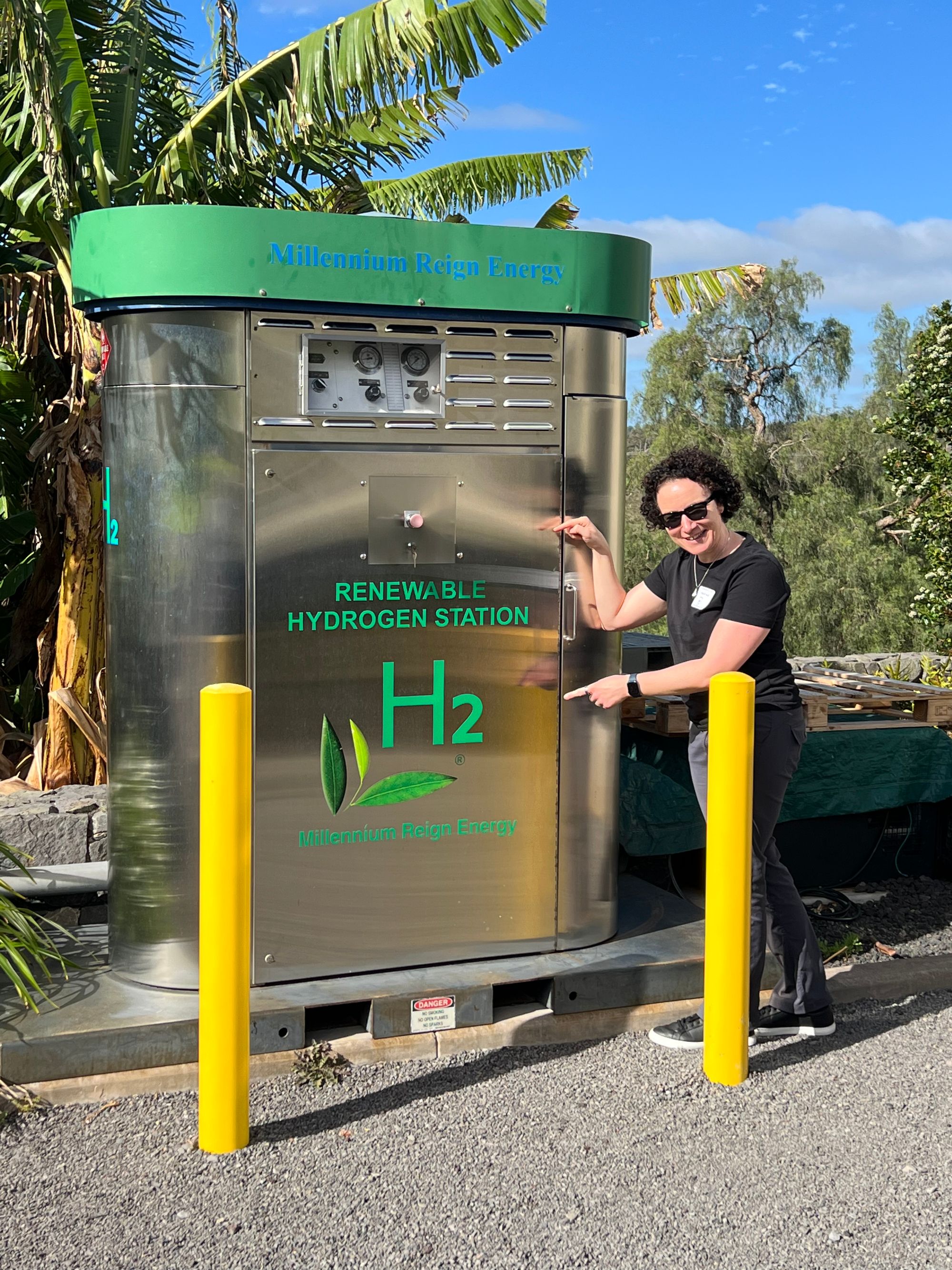A Real-Life Integrated Energy System
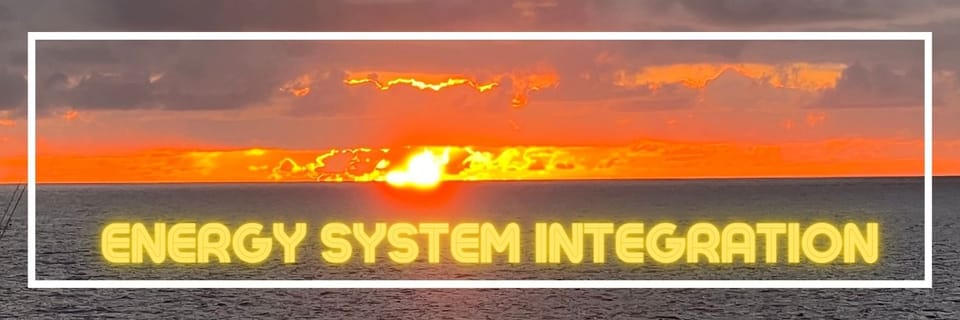
I have been interested in integrated energy systems since the halcyon days of first-year high school science. Mrs. O’Breasail took a dramatic deep breath, looked us dead in the eye and said,“Energy can’t be created or destroyed but changed from one form to another.” This meant that the sunshine I had used to set the grass on fire that lunchtime could do so much more. Could it be converted into electricity? Could that electricity pump water? Could we replace fossil fuels? I was hooked.Through a combination of good connections and good luck, I had the opportunity to visit Pu’u Wa’awa Ranch earlier this month for an incredible retreat.
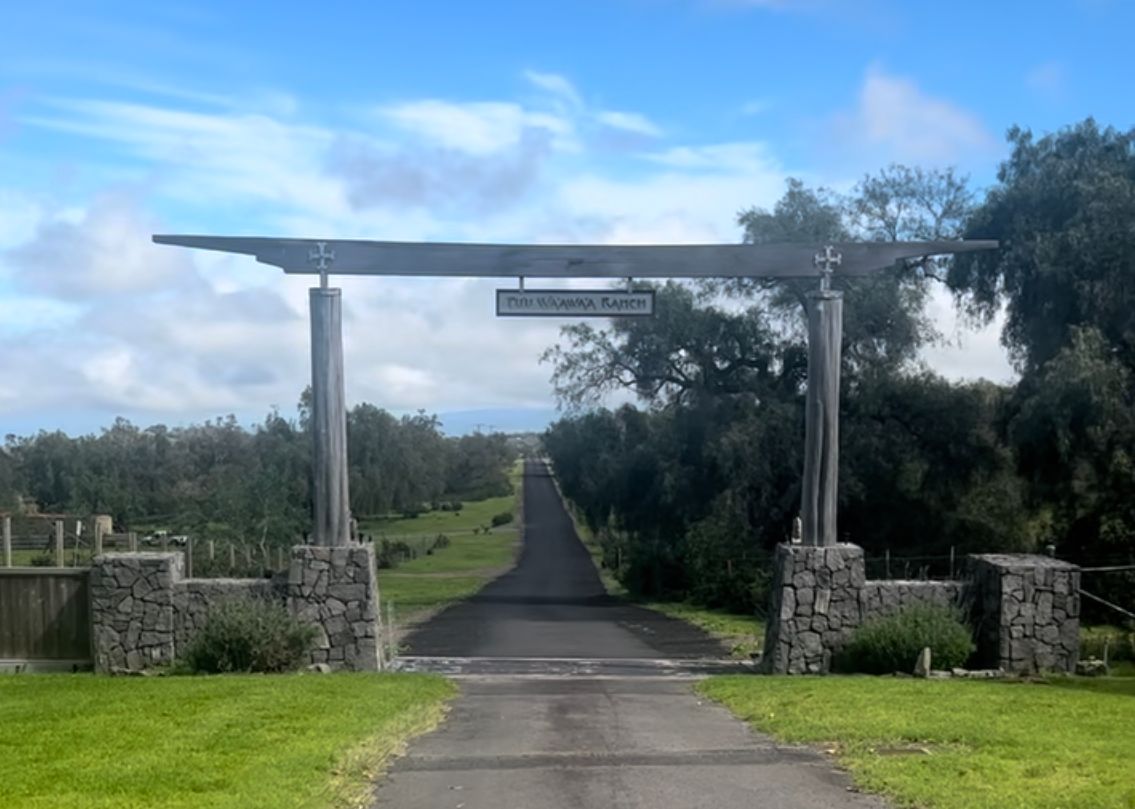
Located within a nature reserve on Hawaii, the climate is so exotic that I saw coffee beans and avocados growing for the first time. The eclectic mix of people attending the retreat had back stories so varied, it felt like an ensemble movie cast! However, both the place and the people paled in comparison for me as it was my first time experiencing a fully renewable, fully integrated energy system. This game-changing integrated energy system is not surprising when you consider its owner. Henk Rogers has spent his life doing things that people thought were impossible. From escorting Tetris to the world from behind the Iron Curtain in the Eighties to the first state mandate for a 100% renewable electricity system more recently, Henk’s ranch is exactly the sort of place where anything is possible.Like Ireland with its abundant renewable energy in the form of wind, Hawaii has an abundance of renewable energy in the form of solar. As a potato-grey skinned engineer, I prefer the Hawaiian sun to the Irish Wind! To capitalize on this natural resource, there are solar panels at central locations as well as on buildings around the Ranch. This includes a strikingly beautiful roof on the Blue Planet Energy Research Lab.
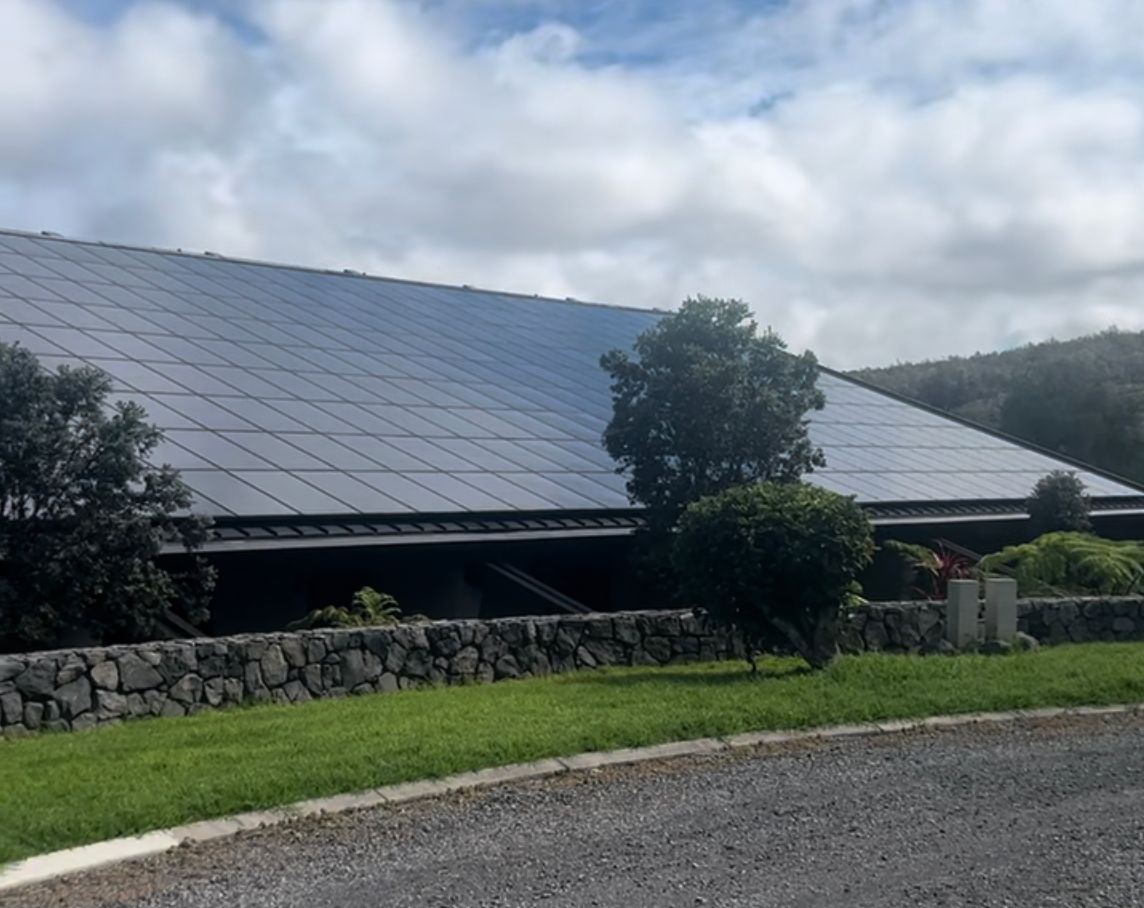
When the sun is shining, the panels covert solar energy to electrical energy and used instantaneously for everything from pumping water around the ranch to charging battery electric vehicles to cooking dinners and washing clothes. A little bit of a sidestep here. The best energy efficiency action is avoiding energy usage. This is why some water demand, for the cattle for example, is met by a gravity feed from high altitude catchment areas.
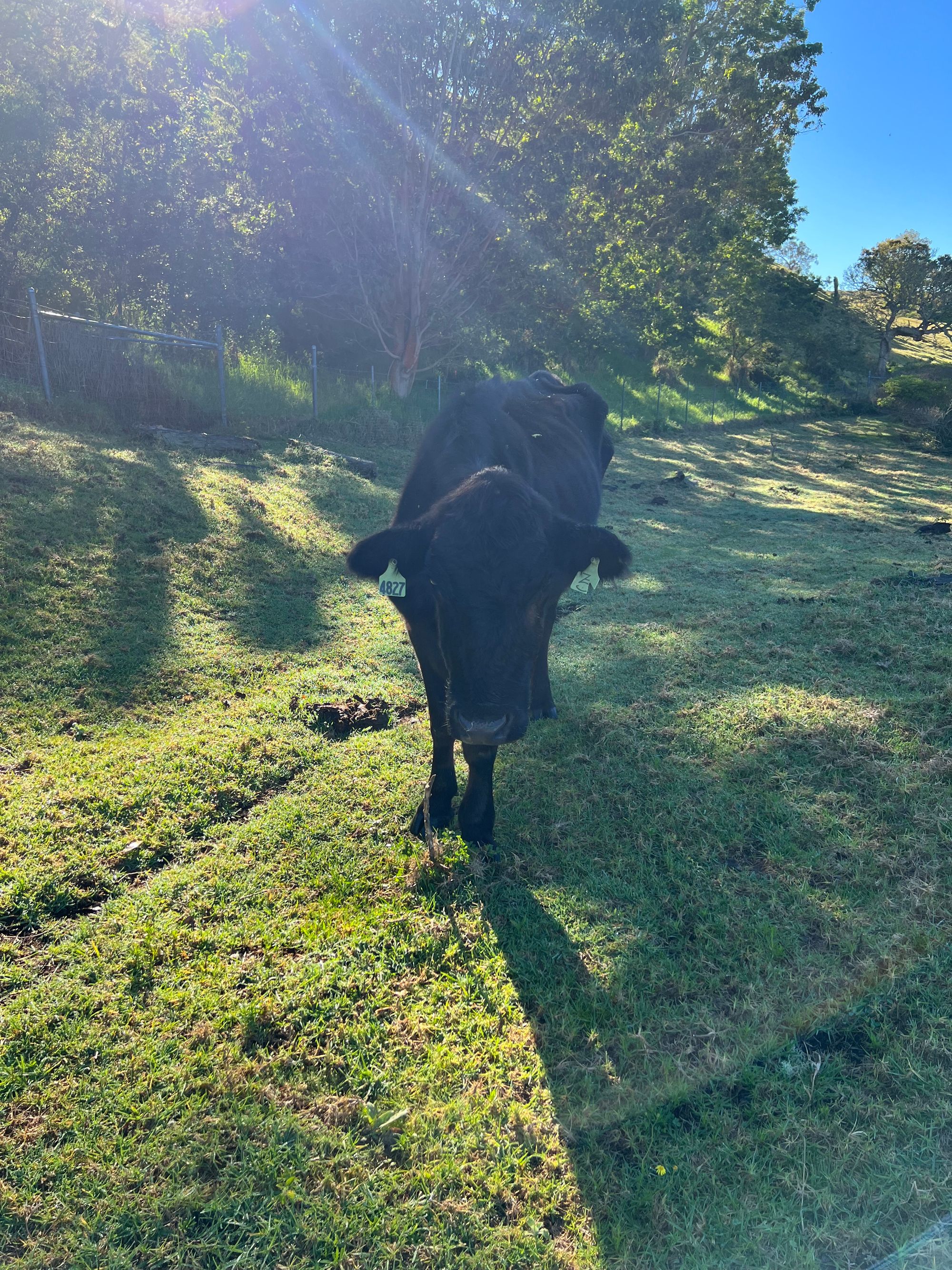
The solar panels are oversized to store energy for use at night or cloud cover. When there is an excess of electricity, it is stored in batteries providing the backup and resilience that could normally be achieved by a connection to a utility electricity grid. When the batteries are full, the electricity is diverted to the on-site electrolyser. This separates water into its constituent parts. The oxygen is vented to the atmosphere while the hydrogen is stored on-site for future use. The Toyota Mirai uses this zero-carbonenergy to power its fuel cell with the only byproduct being the return of water to the environment. Pretty neat.
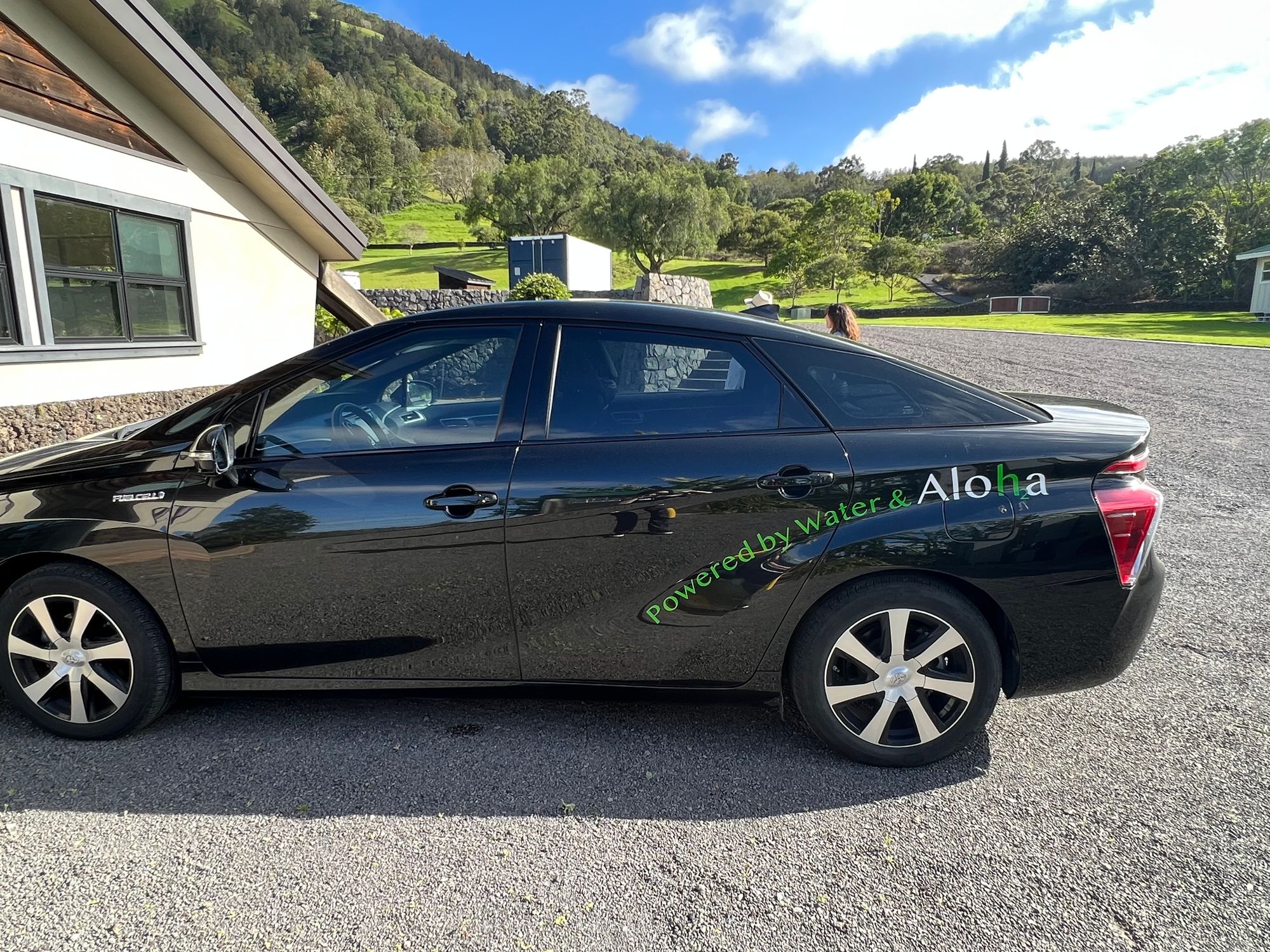
Being an engineer, I like to use models to consider my gut reactions - so while I was elated to experience an integrated energy system first hand, I had to run it through the World Energy Council’s triple lens view of sustainability, equity and security. Solar energy is renewable, and Blue Planet Energy are researching how to make batteries from less impactful materials, so the sustainability threshold is met. Next up, equity – yes, this is a private ranch owned by an energy investor so maybe not everyone could do it. However, we do need early adapters to prototype such solutions before a wider population can adopt them. In addition, the water supply scheme powered by solar energy off grid, means that one hundred families have access to a cheaper water supply so there are co-benefits.

Of course, security is a clear winner, due to the ongoing availability of solar energy rather than the importation of fossil fuels over a great distance to this remote island.
My other favourite checklist is the 4 Ds of a successful energy system. The ranch has clearly achieved decarbonization and decentralization. The next D - digitalisation - really is the secret sauce and the second brain of the lab. The first obviously being Paul and the rest of the team! Knowing how much energy is available and needed allows the system to make default smart decisions. When the sun is shining, the electricity produced is used for immediate demand for example, and hydrogen is not produced until the batteries are full.
Which leads me the last D, democratization. The energy transition affords us an opportunity to create long lasting societal change. Access to clean and affordable energy, SDG07 is a lever for all other sustainable development goals. The people benefitting from the energy are paying for the energy and hosting the infrastructure.
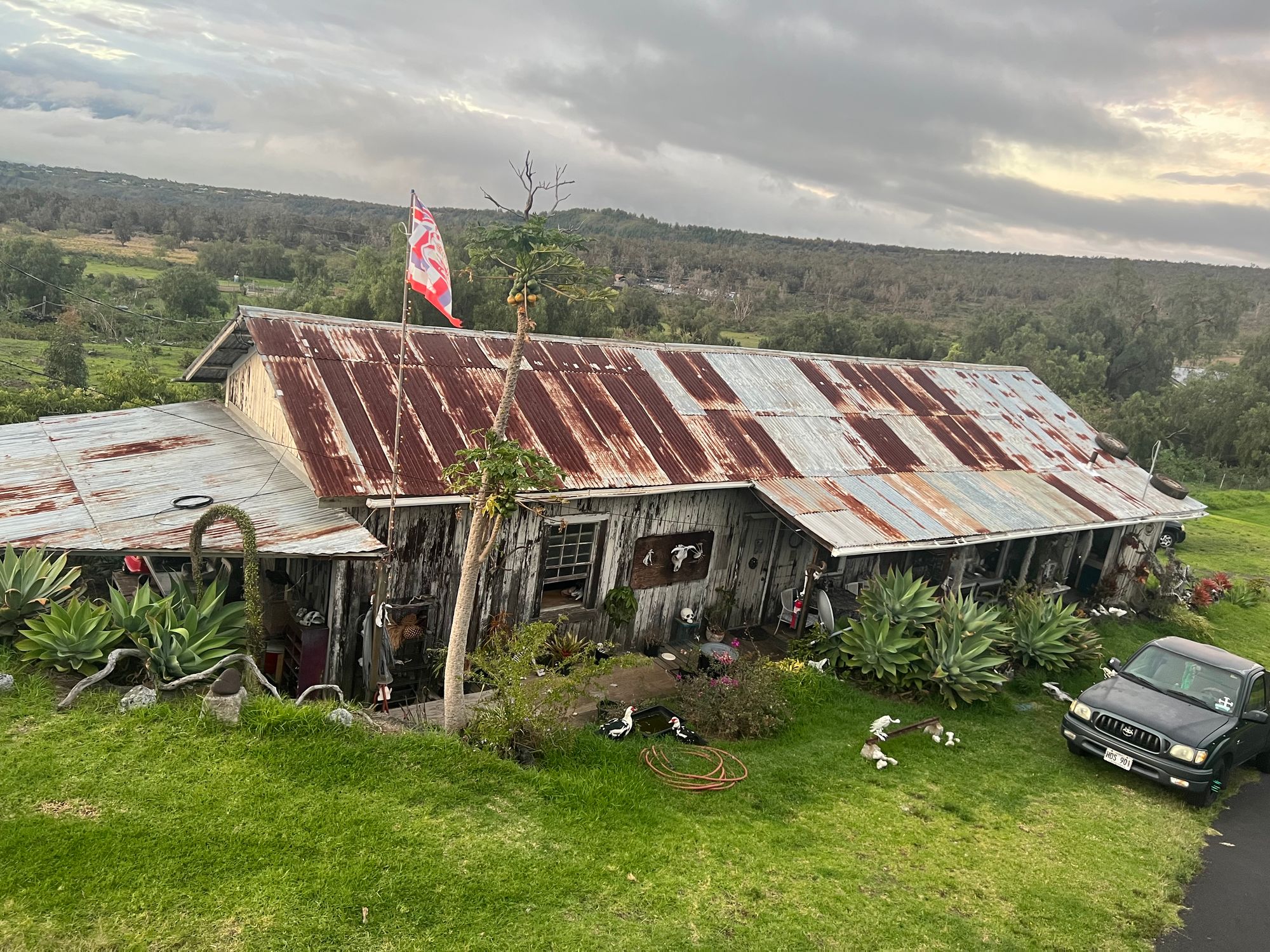
The Ranch’s renewable energy system does not impact anyone else’s ability to live their lives to the fullest. No emissions are impacting future generations.
They say you should never meet your heroes but in meeting a real life renewable integrated energy system, I have met the exception that proves the rule.
